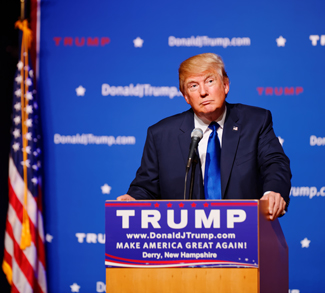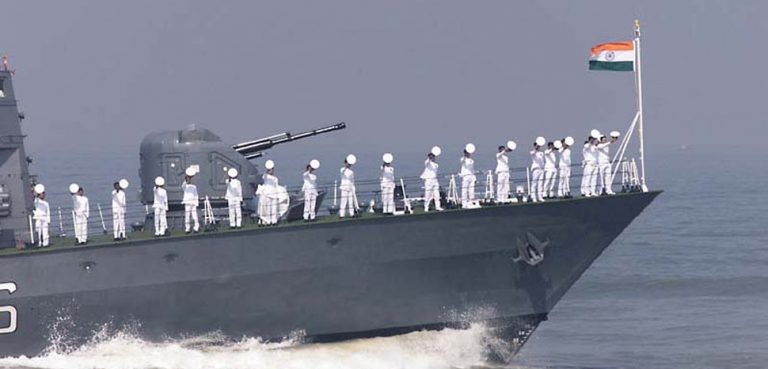The need to develop an accurate understanding about the behavior of complex phenomena –based on timely, reliable, and actionable information – in order to assess potential risks and opportunities has been present since the dawn of civilization itself. Moreover, being able to grasp what is to come is an imperative in order to ensure preparedness and to guarantee an effective decision-making process. Anthropologically speaking, that is why it is often half-jokingly said that espionage is one of the oldest professions.
This necessity to foresee what lies ahead is so deeply embedded into the human psyche that it is even reflected in many facets of our culture. For instance, the Bible tells us about the story of Joseph, who was appointed prime minister of Egypt by Pharaoh himself because of his ability to anticipate contingencies. Likewise, the Delphic oracle – operated by elite priestesses well-versed in both worldly and mystical knowledge – provided suggestions for statesmen, military officers and merchants who needed to choose a course of action. Tellingly, the Moorish medieval historian Ibn Khaldun explains that being able to fathom the essential universal and timeless principles that rule the natural order of human affairs almost amounts to having the gift of prophecy. Classical political theorists (like Machivelli) and ancient strategic thinkers (like Sun Tzu) claim that foresight is one of the core virtues of a wise leader.
This underlying rationale has not changed. If anything, the arrival of the so-called “Information Age” – and its impact on all walks of life – has emphasized the importance of this pressing concern. Hence, strategic intelligence as a navigational compass has become vital in a world of increasing uncertainty. Moreover, even though the utilitarian relevance of this know-how is more than acknowledged in the fields of statecraft and national security, it has managed to transcend to other dimensions as well, including business, industrial research and development, law enforcement and even healthcare (as recent events illustrate).
Hence, global finance is being reinterpreted as a domain that deserves to be examined from a geopolitical viewpoint, due to its reach, depth, density, weight, and dynamism. Accordingly, strategic intelligence represents a capability that can address the growing worldwide intersection where geopolitical forces meet financial realities.
Historical Background
There are noteworthy historical precedents regarding theoretical and practical knowledge related to this convergence. For example, the Arthashatra – an ancient Indian treatise about matters of state that was written eighteen centuries ago – points out that a spy posing as a merchant or jeweller involved in international trade can easily gain access to key political and economic circles. Likewise, the same work also specifies that it is not uncommon for genuine wealthy merchants to have their own spies.
Nevertheless, perhaps one of the most representative cases comes from the golden age of piracy. When the United Provinces were fighting for their independence and often attacking Spanish ships in the Caribbean, the covert intelligence work undertaken by Moses Cohen-Henriques enabled a small Dutch naval force – headed by Dutch West India Company Admiral Piet Hein – to capture the Spanish treasure fleet in the Bay of Matanzas, Cuba. The surgical operation was so meticulously planned that there was no bloodshed.
The captured cargo included not just precious metals and goods from the Spanish Main, but also luxurious items brought from Asia by the Manilla galleons, including silk, spices, gemstones, jade, silk, pearls, porcelain, ivory and carpets, amongst others. However, this was not simply about stealing wealth. Actually, this episode represents an act of asymmetric geoeconomic warfare, since it disrupted seaborne trade between Spain and its colonies in the American hemisphere, it undermined the Spanish royal treasury’s ability to keep funding the war effort in its conflict being fought with the Netherlands, and it delivered a humiliating blow to Spanish imperial prestige. In this case, the lines that divide geopolitical and economic interests – as well as state and non-state actors – are rather blurry.
Nevertheless, private actors have also resorted to strategic intelligence in order to calculate the influence of geopolitical factors on their investment projects and to enhance their competitiveness thanks to a heightened sense of clarity. Actually, that is precisely how in the 19th century the legendary British firm N M Rothschild managed to overtake Barings and achieve a dominant position in the London bond market. Thanks to its wealth, influence and foresight, the former had developed a superior capability to process information from many sources. According to the renowned historian Niall Ferguson, even Downing Street occasionally consulted the firm in order to gain a better understanding of international affairs for the formulation of foreign policy. Just as in the previous example, this case combines financial and geopolitical aspects.
Current Trends
In order to envisage what the future might bring, strategic intelligence offers an interdisciplinary perspective that integrates military, political, diplomatic, economic, technological, social, cultural elements in order to be able to discern the trends that are shaping the course of events in the grand scheme of things. Therefore, based on this reasoning, it is evident that the increasing symbiosis between geopolitics and finance is a matter whose systemic study is more than pertinent for this field, particularly taking into account that it entails complex implications for the interests of national states.
Thus, there are three identifiable long-range patterns that reflect the implementation of concrete actions derived from strategic intelligence:
First Trend: Growing Situational Awareness in Strategic Circles
Contemporary statecraft cannot afford to ignore developments that might fatefully alter the global balance of power in the international system. In fact, there are several signs that the blend of geopolitics and finance is receiving an increasingly greater level of attention.
For example, in the United States – the very country that issues the world’s top reserve currency – senior intelligence and military officials have voiced their concerns about the harmful repercussions for the country’s national security and power projection capabilities that might take place in the event the dollar loses its hegemonic position. Another anxiety that has been expressed by prominent members of the US intelligence community is the possibility that hostile foreign powers could resort to heavy-handed financial measures or outright manipulation in order to pursue their own geopolitical agendas.
Consequently, there have also been wake-up calls concerning the importance of designing offensive and defensive strategies in case such scenarios occur. Needless to say, this goes well beyond what is commonly regarded as traditional in the world of spycraft. Another revealing fact that embodies this attitude was the creation, back in 2004, of the Office of Intelligence and Analysis as a specialised branch of the US Treasury Department, the first finance ministry in the world to establish its own intelligence unit.
These ideas and worries are also manifested in the public versions of the multidisciplinary strategic forecasts prepared by the US intelligence community. Interestingly, the elaboration of these documents usually involves not just government personnel, but also academic experts and representatives from the private sector. For instance, the “Global Trends 2030” report explores a plausible transition from the current monetary hegemony of the greenback – an indicator of US national power – toward a more multipolar global financial system. Furthermore, according to some revelations found in open sources, the Pentagon has sponsored the organization of war games in order to examine how a geopolitical conflict fought in a financial operational theatre would unfold.
Something similar is happening elsewhere. With an aim of developing both defensive and offensive capabilities, these issues are being actively studied in Russia, China, and Iran. In fact, their corresponding strategic doctrines are being readjusted accordingly. For example, the Russian 2020 National Security Strategy explicitly states that financial disruptions must be regarded as significant threats whose consequences can be analogous to those of large-scale conventional military strikes. Chinese military strategists have also discussed in their writings the lethal destructive potential of financial warfare.
Predictably, counterintelligence is also playing a role in these dynamics. For example, Swiss authorities have even expelled foreign diplomats for their alleged involvement in clandestine activities and financial espionage.
Nevertheless, non-state actors are active in this game as well. This is hardly surprising if one considers that – contrary to what some economic theories preach – there is no free and unrestricted flow of information in financial markets. In fact, privileged access to undisclosed information is an unwritten rule for many financial operations in which large sums of money are at stake. An instructive example is the case of credit rating agencies, entities whose purpose is to process countless volumes of data through analytical methodologies in order to bridge informational gaps between debtors and creditors. In other words, information has become a strategic commodity that is coveted by financial juggernauts.
Likewise, in order to prevent and counter dangerous threats in highly competitive business environments, several banks have integrated intelligence units in order to heighten their security standards. For that purpose, former soldiers and intelligence analysts experienced in tasks related to counterintelligence, counterterrorism, and cyber defense have been hired.
Finally, other inhabitants of the financial ecosystem are following the same structural pattern. In fact, it can even be argued that some investment funds rely on operational tactics to gather information from both open and confidential sources as a critical input that can guide their strategic decisions.
Second Trend: The Rise of Currency Geostrategists
From a long-range perspective, the essence of central banking – i.e. the management of monetary policy – has changed little over time. Such task is so complex and involves so many variables that central bankers are often depicted as characters whose cleverness, worldly encyclopedic knowledge, and esoteric savoir-faire are seldom fully fathomed by the uninitiated. Nonetheless, beyond colorful metaphors, the role of central bankers is critical since their attitudes, beliefs, conceptual ideas, actions, and innovations shape the nature of what money is and how it works.
In this context, there is a relatively recent trend that embodies the convergence between geopolitics and finance in the realm of monetary policy. Since the early 2000s, several Central Banks – mainly from the Asia-Pacific region and the Eurasian heartland – have been pursuing a strategy that intends to gradually diversify their foreign currency reserves away from the US dollar. The purpose is to develop the ability to eventually bypass the financial circuits controlled by the United States without unleashing sudden disruptions, which would be detrimental for their own interests. This is a big geopolitical and geoeconomic challenge that requires surgical precision.
These plans entail covert components (like clandestine gold purchases), as well as the use of ‘active measures’ – like executive decisions, relevant transactions, public statements, the negotiation of deals – in order to test the relative strength of the greenback, the reactions of relevant stakeholders, the behavior of financial markets, and the speed of these processes. In other words, it relies on tradecraft related to the collection of actionable intelligence for analytical forecasting and prescriptive purposes.
Another interesting development whose consequences are still unclear is the growing interest of both Russian and Chinese monetary authorities in exploring the potential creation of digital currencies in the near future as a vector for the advancement of financial structures that one day could theoretically offer advantages that diminish the supremacy of the US dollar or at least offer a feasible parallel alternative.
In other words, the technocratic design and implementation of monetary policy – as a quintessential expression of high finance – has always been a highly intricate activity but its structural evolution has been conditioned by geopolitical factors and, as a result, is gaining an unprecedented level of strategic depth.
Third Trend: The Evolution of both MARKINT and FININT
In the present context, great powers are aware that the disruptions triggered by hostile economic, commercial and financial actions can undermine their national security. Hence, the edification of defensive and offensive operational capabilities in this respect becomes an imperative in terms of grand strategy. In order to accomplish such an aim, their institutions need an advanced expertise that is not widely available in traditional intelligence communities. Thus, the corresponding analytical horizons have to be widened and that endeavor necessarily involves non-state actors, like banks and all sorts of private financial entities.
The transversal omnipresence of finance in the modern world offers windows of opportunity to gain a better understanding of what is behind the curtains in all imaginable situations, which is of course useful to unveil strategic secrets. For example, the City of London – one of world’s most prestigious and vibrant financial hubs – embodies this axiom. Given the worldwide reach of British finance, it represents a vast source of economic, financial, and commercial intelligence that has been often harnessed to further the UK’s geopolitical agenda.
Therefore, if one intends to use finance as a conduit to explore geopolitical realities the next step is to establish methods for collecting and processing relevant information that can be transformed into actionable intelligence. There are two key concepts that need to be taken into account: financial intelligence (FININT) and market intelligence (MARKINT).
FININT is usually employed by law enforcement in order to investigate money laundering operations, terrorist financing, tax evasion, embezzlement and political and corporate corruption. Tracking the records that document the behavior of financial flows can reveal connections, networks, interests, identities and other relevant details. Its effectiveness is heavily conditioned by co-operation between governmental and private institutions. Yet, it is also a versatile practice so it can incorporate techniques like sting operations and infiltration as well.
On the other hand, MARKINT was born in the field of the private sector as a proactive way to identify risks and opportunities, protect legitimate trade secrets, prevent hostile actions, anticipate changing circumstances and discover relevant information for making strategic decisions. Its ultimate purpose is to enhance the performance of a company in a competitive business environment.
Therefore, the practical adaptation and disciplinary hybridization of the best practice generated by both FININT and MARKINT can enable the development of states’ intelligence capabilities to deal with those geo-financial phenomena which pose significant challenges for their own national security. Plus, the offensive and defensive potential of this combination can be strengthened with techniques related to the exploitation of other traditional tradecraft tools, as well as with technological components.
This endeavor demands a transition from the classical notion of national security as an exclusive responsibility of the state to a more collaborative framework that facilitates the permanent involvement of the private sector as a key stakeholder, including entities such as investment banks, credit rating agencies, hedge funds and the like. After all, financial entities do not just offer the necessary analytical acumen, but also the conduits and platforms to undertake intelligence collection. Another incentive to establish these strategic partnerships is to protect the assets and operations of private firms from financial attacks motivated by geopolitical interests.
Finally, the participation of academic institutions is also advisable as a catalyst since they can offer programmes and undertake research projects that contribute to the generation of strategic thinking regarding these issues and to the optimization of specialized operational capabilities.
Concluding Thoughts
The growing connection between geopolitics and finance is reshuffling the global balance of power when it comes to redefining the nature of national power, the behavior of international geopolitical rivalries, and maybe even the evolution of hegemonic processes. Moreover, as a result of this reality, interesting innovative developments are flourishing in the field of strategic intelligence.
In the grand scheme of things, that is not entirely surprising. After all, its versatility, multidisciplinary analytical framework, and long-range perspective entail a great deal of utilitarian value for addressing complex phenomena in a highly pragmatic way, especially when they have meaningful implications for national security.
Hence, based on the trends examined above, a scenario of convergence can be seen in the horizon. In addition to what has been explained, one of its most distinguishing – and intriguing – features is that whereas geopolitical analysts are being compelled to scrutinize financial factors, financial practitioners are increasingly experiencing the need to take into account the influence of geopolitical variables.
The views expressed in this article are those of the authors alone and do not necessarily reflect those of Geopoliticalmonitor.com or any institutions with which the authors are associated.




